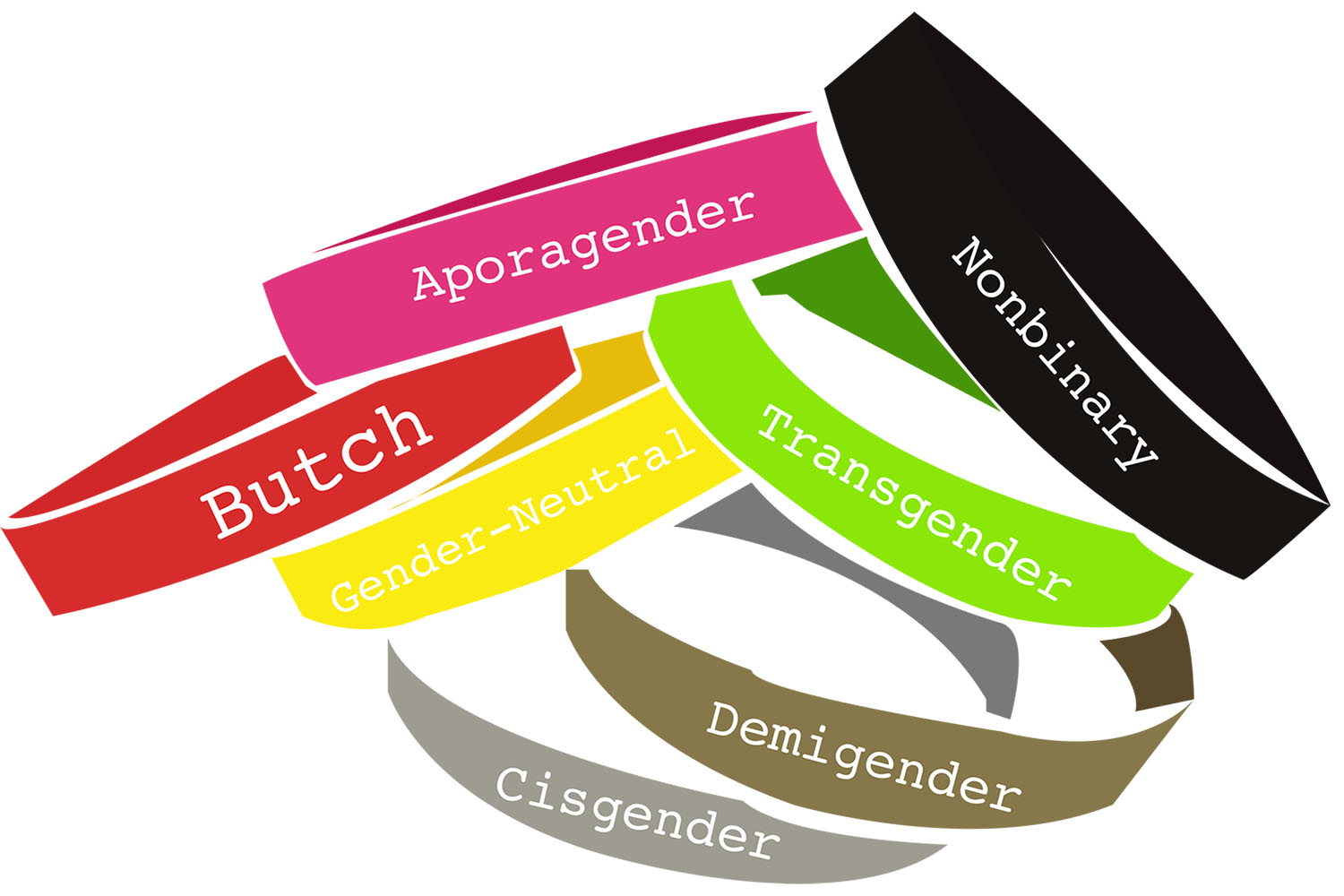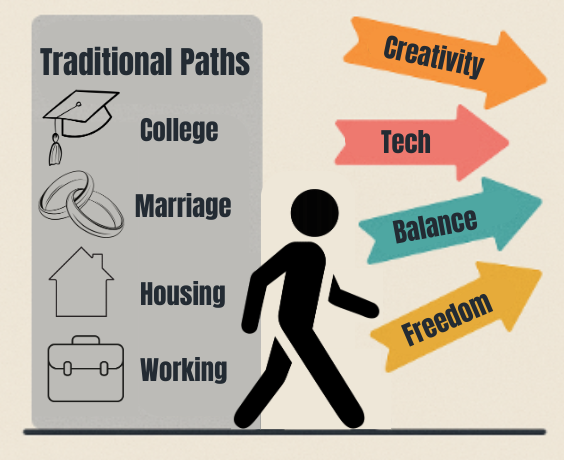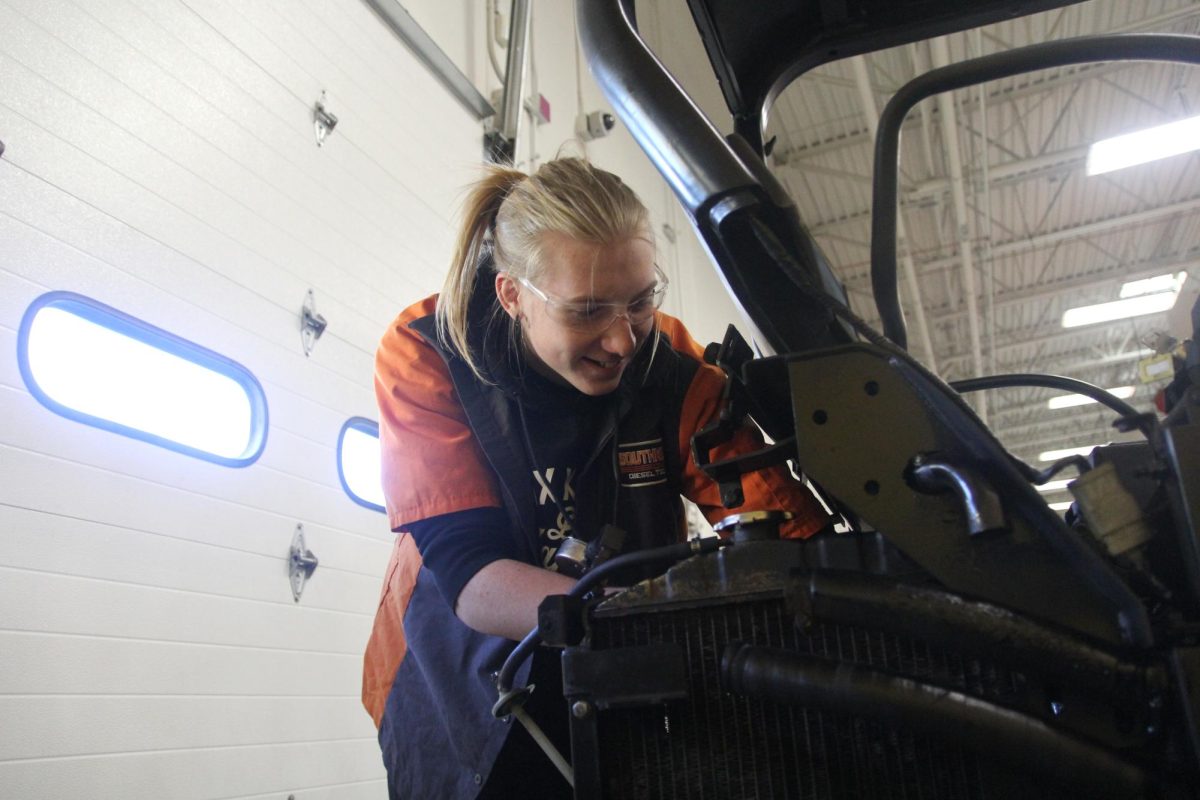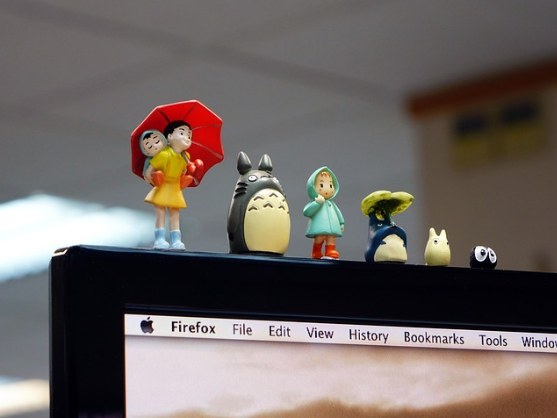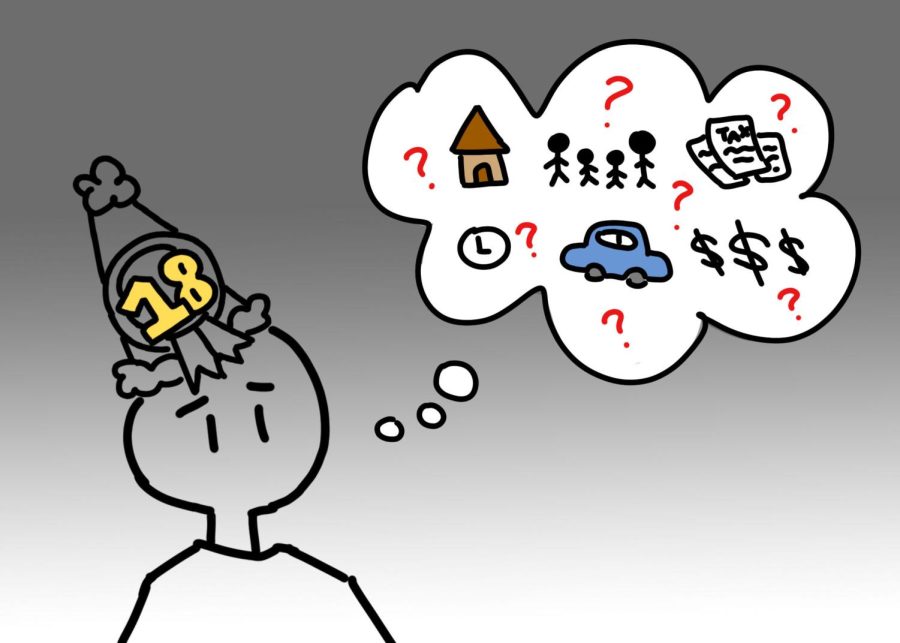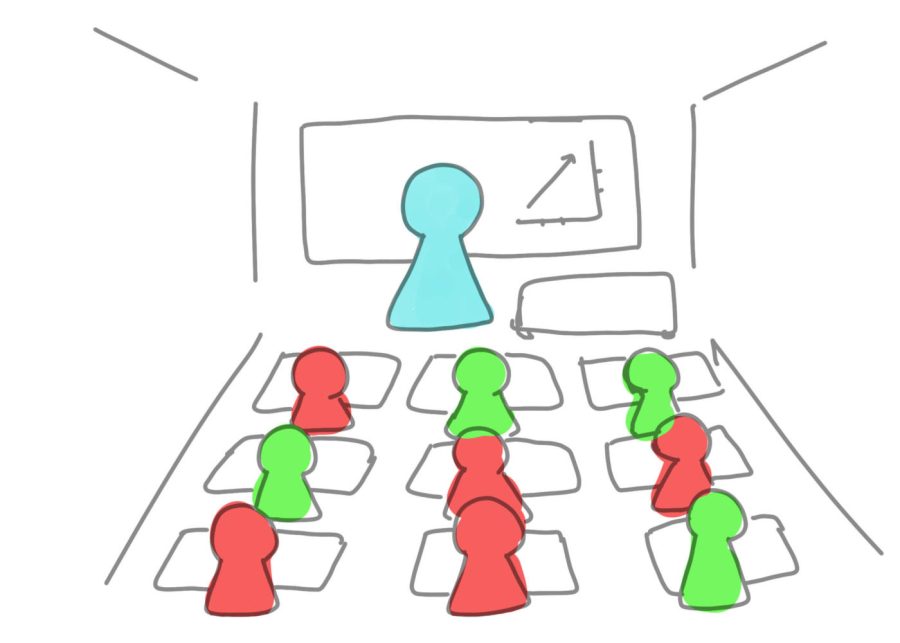Understanding Your Identity
With over 60 identified genders, it can be difficult to understand individuals who don’t fit into the traditional male/female gender roles we have known since kindergarten. Their clothing choices, interests, thoughts and hobbies can also seem odd to those around them.
For these individuals, their day-to-day lives differ from those who identify as cisgender, and simple things, with their parents or feeling comfortable around their peers, are more difficult. And in some cases, their families have difficulty accepting who they identify as.
Because gender is a major part of a person’s life, people who identify other than male and female – are often faced with emotional and physical challenges, including understanding their gender, coming out and adjusting to themselves.
Knowing Before / Questioning
As more and more genders are identified, adopted and represented in today’s society, teens who do not identify with the gender they were assigned at birth, are left with the task of figuring out their own identity.
For senior Honey Salcedo, who identifies as non-binary and uses they/them pronouns, it took them years to figure out their identity through online research.
“Looking back on my childhood, a lot of people would say I couldn’t do certain things cause I was a girl,” Salcedo said. “I imagined if I was born a boy that the same thing would be said to me about feminine activities. For example, in PE class, girls could do ‘girl push ups’. When I tried to do male activities like, pull ups, I was seen as weak instead and had no encouragement. [However,] I still tried every time.”
“I felt like I was neither a boy or a girl, but both at the same time,” senior Honey Salcedo said.
At a young age, Salcedo never completely understood what gender they identified with, nor did they ever identify as the gender they were assigned with at birth—female.
“Growing up I couldn’t understand why certain things were meant for some kids and not others and why activities had to be segregated,” Salcedo said. “It didn’t make a difference to me and I still performed the same as any other kid in my class. I always knew that I didn’t like being a girl. I just thought I was a ‘tomboy,’ as my mom called it, but I didn’t feel like a girl that liked masculine stuff. I felt like I was neither a boy or a girl, but both at the same time.”
After years of being referred to with she/her pronouns, Salcedo decided to ask a friend to refer to them with he/him pronouns. However, those pronouns made them feel uncomfortable due to the fact that Salcedo did not identify with them completely. Finally, they settled on they/them, since the pronouns are gender neutral.
“I don’t like making thought-out decisions,” Salcedo said. “When I knew I had to figure myself out, I wasn’t just going to latch onto something immediately. The first time I learned about non-binary gender was in freshman year, but I didn’t think much of it. At first I was going to try having a friend call me by he/him pronouns, but I felt so weird hearing it.”
Recently, Salcedo began to dress both masculine and feminine, since they didn’t entirely identify with either side of the sex spectrum, male or female.
“After I shaved my head to support my grandma going through chemo, I started to dress more masculine,” Salcedo said. “It was weird at first because I felt so good about myself dressing up that way, but I would sometimes revert back to my old fashion which is more feminine.”
“It wasn’t just me cross-dressing or being a tomboy, it was the way I and other people would be identifying myself from then on,” Salcedo said.
Although it took Salcedo years, they finally understood their feelings and their identity, which is hard to do at a young age.
“I took my time and I learned about what I wanted to pursue,” Salcedo said. “It wasn’t just me cross-dressing or being a tomboy, it was the way I and other people would be identifying myself from then on. Unfortunately, I ignored my feelings all throughout high school. I haven’t liked my birth name since middle school and I thought it was just because it didn’t fit me, that was my only reason. I did my own research on the subject and my research and all of my personal ideologies pointed to me being non-binary. It was just so uplifting to know that I wasn’t the only one who felt that way and that I wasn’t alone.”
Having over 60 genders to choose from can be scary, however, there are many online resources and organizations that can help someone trying to identify a gender label that fits them. For example, The Center, an institution that can be used to make the process of understanding simpler.
“Each coming out story is different,” Youth Organizer at The Center AJ Holly Huth said. “[To help with the process] we have many training options available for people to learn more about the LGBTQ+ community. We [also] offer educational training tailored parents and youth, to make the process feel safer. Coming out is a gift, you don’t have to understand it, just love it.”
Coming Out
As difficult as it is for teenagers to identify their gender, telling their loved ones is a whole different ball game. While it may be an intimidating experience, the result can pay off in the end. For junior Cyncir Pollard-who identifies as non-binary and uses they/them pronouns- coming out had a positive result in the end.
Discomfort had built up over the years for Pollard, but seventh grade became a breaking point for their silence. In middle school, Pollard started to realize that identifying as a male wasn’t right for them. They felt like they were supposed to fit with a certain gender, but nothing felt correct to identify with. So, Pollard waited to be completely sure of their identity before coming out.
“I never felt exactly like a boy but I didn’t feel like a girl, so eventually I just stopped trying to define myself with gender,” Pollard said. “Once I was 100% confident in who I was, I no longer felt restricted to being simply a boy or a girl.”
Despite the confidence that bubbled up as Pollard began to understand themself over the years, they were still faced with having to communicate their discovery with the people they cared about most.
“I only [felt] the need to explain myself to my mom,” Pollard said. “Most people just found out afterwards or assumed. [But,] I was initially scared to tell her because I didn’t know how the environment [at home] would change.”
After months of debating, Pollard decided to tell their mother. It was June of last year after a party that they turned to their mother and spilled their heart out.
“We were in the car on our way home and I said ‘Mom, we need to talk,’” Pollard said. “Then I told her I was non-binary and we talked about it for the rest of the way home. At first she didn’t really know how to respond because it was so sudden. It was 10 minutes after I confessed [when] she responded. She said she loved me unconditionally, but this would take some adjusting to. Since then, she genuinely shows interest in [understanding] pronouns and what it feels like to not be cisgender.”
“Anyone should be able to act, dress, behave or sound any way they want without being categorized into a box by others,” junior Elliot Raeder said.
Other students, like junior Elliot Raeder, have grown up in environments open to accepting sexuality and identity. However, the support does not shield them from the expectation of gender roles. Students are told how to fit into the societal structures based on their genders and the lack of options or even resources about gender has left many to be hesitant on their expression.
“My problem is not feeling masculine enough,” Raeder said. “I am bisexual, but it seems like girls are rarely into me. I have a feminine physique and my voice is high, so people assume I am just gay. But I don’t like the fact that I am supposed to act a specific way in order to be considered masculine. Anyone should be able to act, dress, behave or sound any way they want without being categorized into a box by others.”
Growing up with a set societal expectation has made it difficult for Raeder to find his place or feel fully confident in himself. Even though coming to terms with their identity can be uncomfortable at times, it doesn’t always feel that way for everyone.
“For Elliot, I’ve offered to take part in LGBTQ+ experiences,” Alyson Reader, Elliot’s mother said. “From an early age, I have had my own LGBTQ+ friends around making a positive impact, this shows him my strong friends who are just like him.”
“There is [a] whole community of people that understand what it’s like and will adopt you into their families,” Youth Organizer for The Center AJ Holly Huth said.
Although being accepted can make a difference in other’s lives, it does not mean that coming out is something that has to be extravagant or even has to happen. Gender is the one trait that is determined by the individual regardless of the consequence.
“My advice for coming out would be to make sure you are strong and make sure you are ready,” Huth said. “There is [a] whole community of people that understand what it’s like and will adopt you into their families. I don’t know how many holidays I have spent with my queer family over my biological family.”
Adjusting to Changes
Having the courage and strength to express gender identity to the world is not an easy task. This action alone impacts every portion of one’s life as they try to adjust themselves to their new life. Not only is it hard for the person who’s transitioning to adjust, but for those around them.
Since fifth grade, sophomore Nathan Gregory felt out of place when referring to his gender and knew he didn’t identify as female. Although Gregory knew he was transgender for four years, he did not officially come out to his friends and family until freshman year.
Ever since coming out, Gregory had to adjust to the norms of being male. However being underaged, he has faced the issue of not being able to fully transition, such as hormone replacement therapy.
“[Coming out] impacted me as a whole to be more open about who I am, because I never used to be,” Gregory said. “[I] feel a bit more comfortable in my body.”
Gregory may have understood his gender for years, but his expectations for transitioning were different than reality.
“[One of] my expectations was that people would respect my decision, [which] was the opposite of what happened,” Gregory said. “I also thought it wasn’t going to be as nerve-racking to tell people. I didn’t think it would be so scary to tell people everything.”
Although Gregory feared his loved one’s reactions, all of his friends supported his gender identity. Especially Gregory’s boyfriend, sophomore Joseph Ramella, who has been giving him unconditional love since coming out.
“I was happy that Nathan felt comfortable to come out to us and tell us who he felt he like he really is,” Ramella said. “I was supportive and made sure that I would use the right ones and if I did mess up I would make sure to correct myself.”
One of the hardest adjustments for Gregory’s loved ones is using correct gender pronouns. After switching pronouns, his close group of friends stumbled in the beginning when using the correct ones. This was solved by reminding one another when they would fumble.
“I messed up with pronouns and I would make sure whenever I would address Nathan I’d think about it twice before saying it,” Ramella said. “I would just make sure I would say it in my own head [before saying anything].”
“Certain things that [have changed] are that I have to deepen my voice on [my] own, I use cologne now and I wear men’s clothing,” sophomore Nathan Gregory said.
Since coming out and transitioning from one gender to another, Gregory has had to make minor changes to his day-to-day life to appear more masculine. By adjusting to this new process, Gregory has taken baby steps toward his change.
“Certain things that [have changed] are that I have to deepen my voice on [my] own, I use cologne now and I wear men’s clothing,” Gregory said. “Nothing has changed with the bathroom [I use]. I’m still working on gaining the courage to do that type of thing. I’m afraid I’ll get stared at and I really don’t like that feeling.”
When going through a gender transition, the adjustments one makes not only affects them, but also how the world sees them. Adjusting to gender will differ from person to person. The most important thing is understanding and accepting that not everyone may react the same.
“[To someone adjusting], I would [tell them] to have an open mind because you can’t judge what someone wants in their life,” Gregory said. “The best way to adjusting is to think whenever you’re trying to talk, say their name or gender. Think twice about it before saying [it], just so you know you’re saying the correct thing. It differs with different people because of their certain views on [gender].”
The Road Ahead
On the journey to coming out, individuals must persevere through rough and narrow pathways. When all is said and done, those who struggle with gender identity are often relieved once they free and express themselves.
In Pollard’s case, hearing their mother say, ‘I love you,’ after coming out lifted the weight that once tied them down. Despite the changes Pollard had to go through, they eventually learned to accept the way life currently is and appreciate the love that they receive from their supporters.
“Since coming out, I feel relieved because I can be myself unapologetically,” Pollard said. “After being afraid to be myself for so long, then finally being accepted by the person who means the most to me is one of the best feelings ever.”
In the end, when identifying themselves, teens need to choose which gender matches their feelings. Gender is a choice, so teens must identify with what they want and must ignore others opinions. Take it from Salcedo, who took years to finally understand and adjust to their gender.
“Take your time and don’t rush into things,” Salcedo said. “Some people will support you and others won’t, but it doesn’t matter. They don’t really affect you and you don’t affect them.”

